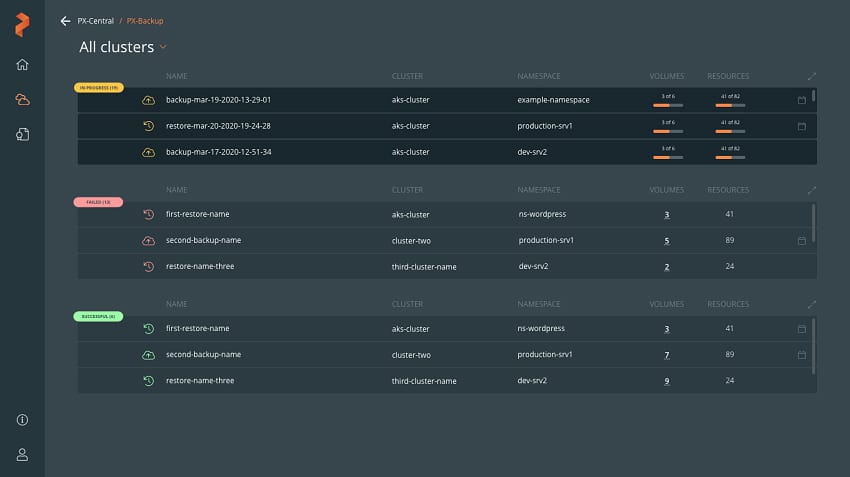Today, Portworx announced that the first major update of their backup product, PX-Backup, will be available in Tech Preview later this week. The last half of the month will also see updates for Portworx Enterprise and PX-Autopilot for Capacity Management. Goutham Rao, Murli Thirumale, and Vinod Jayaraman cofounded Portworx in 2014. Portworx’s software all starts with the company’s name and are focused on providing cloud-native support and management of stateful Kubernetes products. The free version of their product, Portworx Essentials, supports up to 5 nodes with 5TB of storage per cluster.
Today, Portworx announced that the first major update of their backup product, PX-Backup, will be available in Tech Preview later this week. The last half of the month will also see updates for Portworx Enterprise and PX-Autopilot for Capacity Management. Goutham Rao, Murli Thirumale, and Vinod Jayaraman cofounded Portworx in 2014. Portworx’s software all starts with the company’s name and are focused on providing cloud-native support and management of stateful Kubernetes products. The free version of their product, Portworx Essentials, supports up to 5 nodes with 5TB of storage per cluster.
PX-Backup was released to general availability just this year, in May 2020. It’s impressive that they already have a significant release ready to show after only three months, especially with all the disruption from current events. The market has been rewarding the company’s hard work. As we previously covered, Portworx had a remarkably strong first quarter, and their second quarter was equally impressive.
PX-Backup 1.1, which will be available as a tech preview in just a few days, adds four new features and a fistful of new metrics. New metrics include the number of protected namespaces, size of backups, alert status for backups, and alert status for restores. Going hand in hand with the new metrics is an improved UI that allows IT teams to identify and support backups for any custom or generic CRDs. As a failsafe measure, the company has also added support for namespace quotas. Application CPU, memory, and storage quotas can be applied at the namespace level in 1.1, ensuring restored applications are placed on clusters with sufficient resources to run. Further improving the restore process, PX-Backup 1.1 will be able to selectively restore individual resource types from a backup instead of having to restore the entire application. Being able to restore just the desired elements not only adds useful flexibility but can also improve the time to get back up and running after a restore. The fourth and final new feature added in 1.1 is default scheduling. Default scheduling allows admins to define policies that should be applied by default to namespaces or applications within their Kubernetes environments, including using wildcards to capture namespaces that have not yet been created.
Portworx Enterprise also has some new upgrades heading our way. Portworx Enterprise 2.6 is scheduled for August 24, 2020. Keeping with the theme of improved backup and restore, 2.6 improves performance for complete etcd loss so that the Portworx storage cluster continues to operate as expected during temporary etcd outages. The new version will also improve node capacity rebalancing. The software will shuffle replicas around to prevent any single node from reaching full capacity as long as other nodes have space and are able to move replicas for a balanced state. Portworx Enterprise 2.6 will also add support for proxy volumes and k3s Kubernetes clusters.
PX-Autopilot for Capacity Management 1.3 is due out at the very end of the month. The update will add requested improvements in the form of GKE pool management support, auto pool rebalance, and GitOps based approval workflow.
Availability
- PX-Backup 1.1 begins tech preview on August 19, 2020.
- Portworx Enterprise 2.6 release is scheduled for August 24, 2020.
- PX-Autopilot for Capacity Management 1.3 release is scheduled for August 31, 2020.
Engage with StorageReview
Newsletter | YouTube | Podcast iTunes/Spotify | Instagram | Twitter | Facebook | RSS Feed

